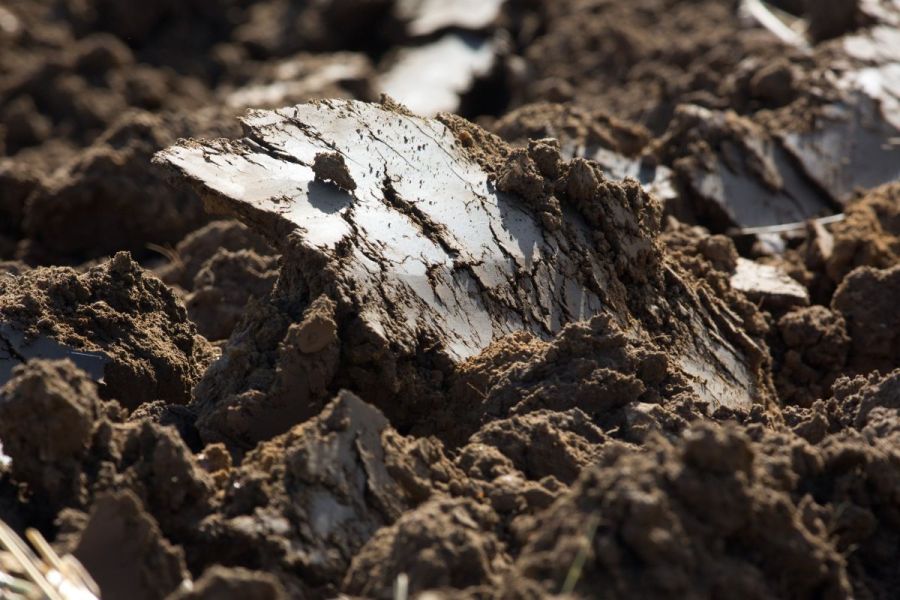With many soils looking in a sorry state following a difficult year, taking action is vital to minimise the risk of suboptimal herbicide performance. CPM finds out more.
“Inconsistencies in the soil profile can result in areas where the herbicide concentration is either too high or too low which reduces overall efficacy.”
By Charlotte Cunningham
As a difficult season comes to a close and focus turns to the 2024 autumn drilling campaign, giving careful consideration to the impact soil conditions may have on herbicide performance will be imperative to get crops up and away and weed-free.
This is according to Ian Rudge, sustainability trials manager at Agrii, who says off the back of a challenging year due to the amount of rainfall the UK has had, soil structure could be an issue for both crop establishment and early weed control. “As we head into autumn, it’s gone from being as wet as old boots right the way through the growing season to now looking slightly drier. While there’s still plenty of moisture about, a lot of it is in the cultivation zone and soils are looking very sad and blocky at the moment.
“There are still a few weeks before we get into the main drilling window, but the reality is that we’re going to have a lot of less-than-ideal seedbeds in many situations.”
Aside from suboptimal crop performance and growth, poor soils can have a major impact on herbicide performance, he continues. “When we think about poorly structured soils, we’re talking about the presence of clods, compacted layers and lack of porosity. Where these features are present in soils, it can significantly affect both herbicide efficacy and adsorption/desorption,” explains Ian. “Inconsistencies in the soil profile can result in areas where the herbicide concentration is either too high or too low which reduces overall efficacy.”
What’s more, poorly structured soils especially sandy soils with low organic matter, are prone to leaching, he adds. “Herbicides can move more quickly through the soil profile, reducing the time they remain in the root zone where they are required to control weeds.”
With regard to adsorption and desorption, suboptimal structure often correlates with lower organic matter and clay content, both of which are vital for adsorbing and holding herbicides. “Low adsorption can lead to more herbicide being available in the soil solution, potentially increasing herbicide movement out of the weed germination zone – especially after heavy rainfall in lighter soils – which in turn reduces residual control,” he adds. “There’s also a crop safety issue here, as many noted last autumn.”
Adding to this pressure is the fact that many growers are likely to drill earlier, through fear of getting caught out like last autumn, meaning there’ll be additional pressure on herbicides to remain active in the soil for a longer period of time, warns Ian. “There will be a lot of growers banking on a really robust pre-emergence stack. But there are lessons to be learnt from last year, too.
“With excessive rainfall last autumn washing herbicides out of the weed zone, we saw crop damage and reduced plant counts as a result of big stacks, especially where growers had rolled for slug control. So it’s a tricky situation to be in which has to be managed carefully through various actions.”
So what can growers do to mitigate the risk? “Taking remedial action to physically correct any structural issues and get soils in better condition should be the immediate priority,” says Ian. “For example, I’ve been ploughing after barley recently where there was a lot of ground compaction. The ground is very tight and definitely not as friable as last autumn. If growers even move just that top 5-10cm – to take out any surface compaction – it will definitely help.
“Carrying out some drainage work – using a mole drain – will also likely be beneficial. It’s vital to get soil structure in a good state to help get crops off to the best start and maximise stale seedbed opportunities as they’re likely to be limited in some scenarios this year.”
Ian recommends using a traffic light system to rank the weed risk level of individual fields and guide the best course of action when it comes to rectifying soil issues. “If you have a red field – ones which have had excessive levels of weeds this year, for example – it might be worth doing something completely different. This could include ploughing the soil or even just switching to spring cropping. In the current conditions, ploughing might be really beneficial, though it does pose its own challenges and isn’t suitable for all soils and farms.”
As it’s unknown how the coming weeks and months will play out in terms of the weather and conditions going into the autumn, having a proactive plan – where possible – is key, believes Ian. It’s his view that part of this plan should include incorporating an adjuvant into the tank mix to keep herbicides working to the best of their ability in what could be another challenging season.
“Having an adjuvant as part of the herbicide programme is very economic and is an insurance giving an added benefit of better movement of actives to compensate for any poor establishment conditions.”
In terms of products, he advocates the use of Interagro’s Backrow Max which he says has proven itself across a variety of crops both winter and spring.
So how exactly does Backrow Max work and how can it help to mitigate the negative impacts of poor soil structure on herbicide performance? “Backrow Max is a specialist activator adjuvant, which is designed to aid application efficiency,” explains Stuart Sutherland, technical manager at Interagro. “It does this in a number of ways, firstly by the reduction of drift which ensures more of the herbicide reaches the target area.
“It also helps to create a more optimal droplet size for pre-emergence herbicide application, leading to improved coverage on the soil.”
Critically, in terms of absorption and retention, Backrow Max helps increase herbicide retention in the weed germination zone better than any other adjuvant tested – enhancing residual herbicide activity, claims Stuart. “Although we’ve not been short of rain this year, it’s important to know that Backrow Max can also be beneficial when we do inevitably find ourselves in a dry situation again as it slows drying on the soil surface – helping to maintain soil moisture levels – aiding the consistent release and uptake of herbicides.”
It’s for these reasons that Ian says most of the farms he works with now use Backrow Max across the board. “It’s just an inherent part of the pre-em programme now.”
Although the inclusion of the adjuvant can be hugely beneficial, it’s important to be realistic and Ian warns that it’s not a ‘get out of jail free’ card in severely compromised situations. “In suboptimal situations you’ll definitely improve herbicide performance with Backrow Max, but it won’t mitigate a poor, compacted seedbed, so it’s important to carry out other actions to correct this as much as possible prior to drilling.”
With so many scarred from the previous season, Ian says it’s understandable that justifying an added cost like Backrow Max can be a difficult decision – particularly when many are already spending around £100-140/ha on their early weed control programme.
“But growers ought to think about how much of that investment they could be losing in extreme conditions. With the amount of money spent on the herbicide stack – both pre- and post-em – these products should be given the best opportunity to work to their potential.
“For the sake of a few pounds per hectare with the inclusion of Backrow Max – i.e. an additional 3% spend – the efficacy and safety advantages of the product makes for a cheap insurance. There are those who are sceptical about how it works, but in my book it’s an essential part of a considered approach to herbicide programmes and grassweed control.”
This article was taken from the latest issue of CPM. Read the article in full here.
For more articles like this, subscribe here.
Sign up for Crop Production Magazine’s FREE e-newsletter here.




